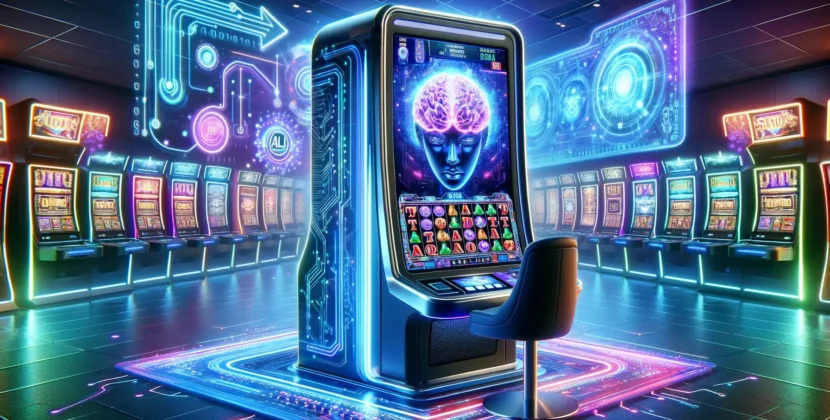
The gambling industry is a global powerhouse, raking in billions of dollars each year. Among the most popular attractions in casinos, slot machines stand out as the most profitable and ubiquitous. These machines, often called “one-armed bandits,” have evolved significantly since their inception, but the allure of striking it rich with a simple push of a button remains as strong as ever. In this article, we delve into the history, mechanics, and innovations that make slot machines both captivating and profitable.
The History of the Slot Machine
The story of the slot machine begins in the late 19th century during the California Gold Rush, where gambling became a popular pastime. In 1893, a San Francisco mechanic named Gustav F.W. Schultze created the first gambling machine. It was a simple device that accepted a nickel and featured a colored disk that spun. When the disk stopped, a star wheel determined the payout. However, the machine’s design was basic, and it didn’t attract much attention.
The real breakthrough came with Charles Fey, who improved on Schultze’s invention by adding three reels instead of one. Fey’s machine, known as the “Liberty Bell,” featured playing card symbols and used springs, cams, and levers to create the suspense of the reels stopping in succession. With over a thousand possible combinations and a payout rate of 75.6%, Fey’s machine became a hit in saloons across the United States.
Herbert S. Mills further popularized the slot machine by making them more reliable and cost-effective to produce. Mills also introduced the idea of including gum as a prize to sidestep laws that restricted gambling. His machines incorporated the famous bell and other symbols on the reels and increased the number of payout lines, which enhanced player engagement.
By the 1920s, slots evolved to accept larger denominations like quarters and silver dollars. Innovations such as skill elements and jackpots further boosted their appeal. The introduction of electromechanical slots in 1963 marked the beginning of the electronic era, allowing for more advanced features and larger jackpots. In 1981, Michael S. Redd’s company, International Game Technology (IGT), revolutionized the industry by introducing computer-generated random number generators (RNGs), which replaced the traditional mechanical randomizers.
The Mechanics Behind Modern Slot Machines
Modern slot machines are vastly different from their mechanical ancestors, thanks to the integration of advanced electronics. At the core of every slot machine is the RNG, a computer chip responsible for determining the outcomes of each spin. This RNG generates thousands of random numbers per second, and each number corresponds to a specific reel position. When a player activates the machine, the RNG selects a number that dictates where the reels will stop.
The RNG system replaces the mechanical spinning wheels used in older machines. Instead of physical reels, modern machines display virtual reels on screens, with symbols mapped to positions based on the RNG’s output. A stepper motor controls the physical reels, while the virtual reels are animated through software.
One of the key elements of modern slot machines is the weighting of the symbols. For instance, the jackpot symbol may appear more frequently on the first reel, while other reels may have lower odds of landing on high-paying symbols. Blank spaces are often weighted more heavily, which is a design feature that contributes to the “near-miss” effect—a psychological tactic that keeps players engaged by making them feel as though they’re close to a win.
The Psychology of Slot Machines
Slot machines are not only engineered for mechanical efficiency but also designed to exploit psychological triggers. The flashing lights, loud sounds, and animations of winning combinations create an immersive experience that keeps players coming back. The near-miss effect, where the player almost wins but falls short, triggers the brain’s reward system, keeping the player hopeful and motivated to try again.
Moreover, the simplicity of slot machines makes them accessible to all types of players, regardless of skill level. Players don’t need any special knowledge to play; they simply insert coins or credits, press a button, and wait for the reels to stop. This accessibility makes slots incredibly popular, particularly in casinos that rely on the revenue they generate. In fact, slot machines accounted for 67% of the total casino profits in Las Vegas in 2006.
Innovations in Slot Technology
Over the years, slot machines have continued to evolve, integrating new technologies to enhance the gaming experience. One of the most significant advancements is the networked slot machine, where multiple machines are connected to a central server. This allows casinos to remotely manage and adjust the settings of machines, including minimum bets, payout percentages, and the type of games offered.
Another recent trend is the incorporation of video game elements into slot machines. Many newer machines feature high-definition video screens, 3D graphics, and interactive gameplay, making them more engaging for younger players. Some machines now offer multi-level games that mimic the progression of a video game, offering players the chance to unlock bonuses and additional features as they play.
Casinos have also embraced themed slot machines, with games based on popular movies, TV shows, and celebrities. Machines based on franchises like “Lord of the Rings” and “Sex and the City” attract fans of those properties who may not typically play slots. This trend taps into the growing overlap between gambling and entertainment, as casinos aim to create an experience that is as much about fun and excitement as it is about winning money.
Conclusion
From their humble beginnings in the Gold Rush era to the high-tech, immersive machines of today, slot machines have come a long way. They combine elements of engineering, probability, and psychology to create an experience that is both simple and addictive. As technology continues to evolve, it is likely that slot machines will continue to innovate, keeping them a dominant force in the gambling industry for years to come.
Slot machines may not require skill, but they offer a unique combination of chance and suspense that keeps players engaged and casinos profitable. Whether it’s the excitement of the near-miss or the thrill of a jackpot, the allure of the slot machine remains strong, ensuring its place at the heart of the modern gambling world.










